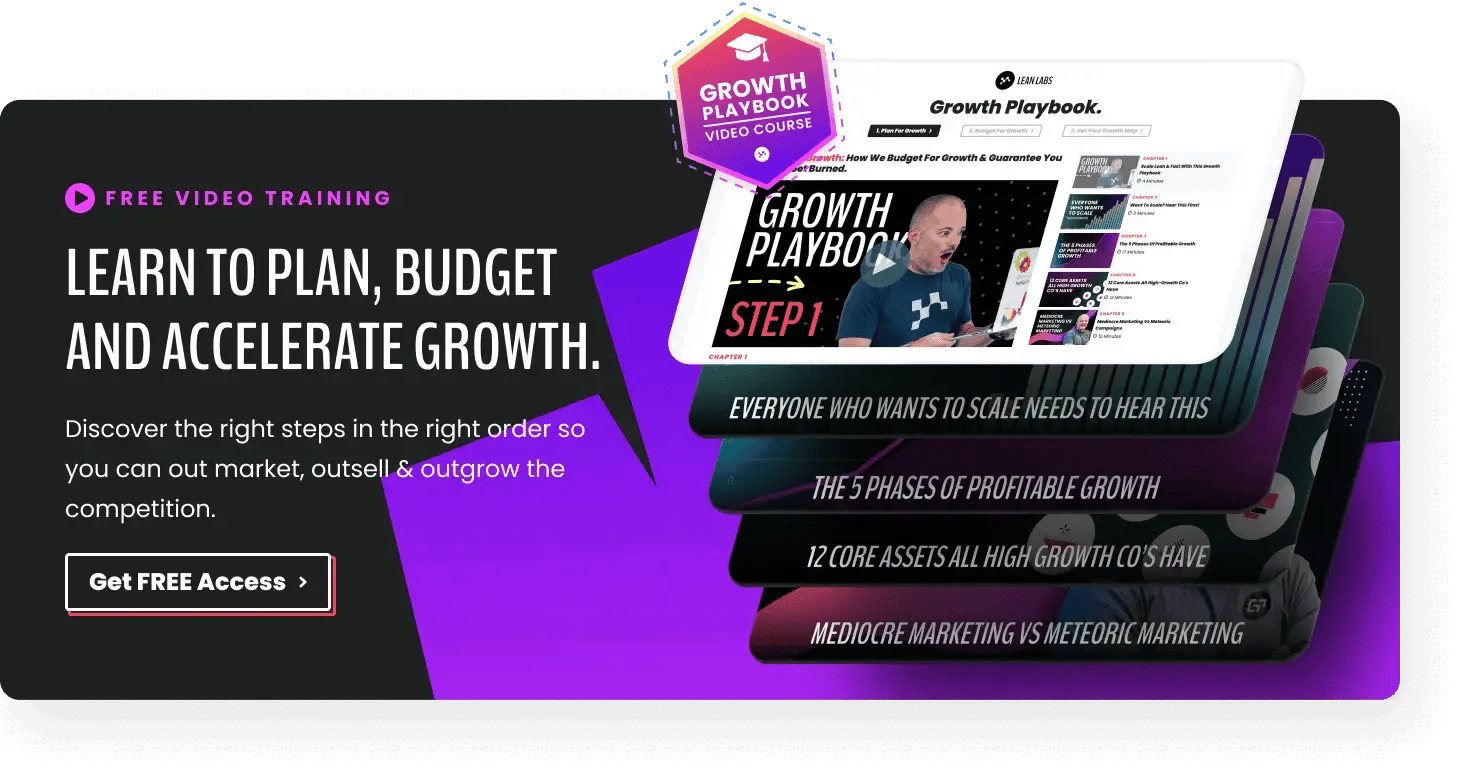In this competitive global economy, the answer can only be yes.
It’s a never-ending race for businesses looking to stay ahead, but the most successful ones also pay attention to opportunities that could get lost underfoot. One of these is the use of multilingual landing pages.
Building multilingual landing pages for your website is a simple and relatively cost-effective way to further optimize your web marketing campaign without necessitating a complete overhaul of your strategy or your budget.
This article will answer all your questions about what multilingual landing pages are, why you need them, and how you can get started on building them to reach a wider audience.
If you’re ready, let’s begin!
What Do We Mean By ‘Multilingual’ Landing Pages?
But first, let’s get some potential misconceptions out of the way. Multilingual pages are not:
- One page made of copy in multiple languages.
- Multiple pages with one-to-one translations of an original page’s content.
On occasion, you may find sites that offer on-click or drop-down language options that run its content through Google translate. But this, too, does not a multilingual page make.
And if you’ve been keeping up, you’ve probably already realized that a multilingual landing page is none of these things at all.
What Are Multilingual Landing Pages?
When we say multilingual, we mean that these pages are designed to maintain their original meaning and objectives but are tailored for users in their own language.
Let’s take for example these landing pages for Apple:

“Novedades a la vista” and “Nouveautés à l'horizon” both mean pretty much the same thing. In English, they would more or less translate to “Novelties on the horizon.”
But let’s look at the same landing page in English:

Not what you expected, isn’t it?
But this change is far from arbitrary. In English, the word “novelties” has the connotation of being trivial or superficial, which is most definitely not the image that Apple wants to impart!
Now let’s look at the landing pages for the iPhone 13 Pro in English and Spanish.

“Every interaction feels new again” doesn’t translate exactly to “cada toque parece magia” (every touch feels like magic), but you can’t deny both pack a punch!

Sierra Blue isn’t the same thing as azul alpino (Alpine blue), but doesn’t the latter seem to be a better fit? The Alps are an iconic mountain range that is close to home for many Europeans. The French translation (bleu alpin) would also seem to agree.
This is an example of what we mean by multilingual landing pages. Basically, what you have is a landing page in your original language, and a set of variations that stand parallel to one another, professionally translated into different languages.
As you can see, the copy is not translated word-for-word, but with care to sound natural and relevant to the speakers of the target language. What matters is conveying the effect of the original, instead of just the literal meaning.
This level of care is applied down to the smallest detail. Try looking at both landing pages again and see what other differences you can find.
For an additional challenge, try adding the Latin American Spanish version into the mix!
Remember: Landing Pages are an Art Form
It’s like poetry in translation—each word, each line of a poem is carefully chosen and structured to achieve the most powerful effect, which is often lost when simply translated word-for-word. Translating poetry is an intensely creative process, the goal of which is to recreate a poem’s effects within another language, one that has its own quirks and cultural assumptions behind it.
Landing pages share the same philosophy. All elements of a landing page down to the smallest detail are carefully thought out and designed in the finest of strokes to achieve a certain effect, which is to maximize conversion rates.
Simply translating your landing page’s copy to a target language ignores its nuances and the way people actually use it. What works for your landing page now may have less impact, or not work at all, when translated into a different language. This can severely limit your page’s conversion potential.
The process of making multilingual landing pages requires a good eye and a creative hand to bring out their full potential.
Why Should My Website Use Multiple Language Landing Pages?
Now that’s all well and good, but how exactly do multilingual landing pages help drive conversions?
It’s common sense that people would prefer to engage with content in their native language, but let’s take a deeper look at just how much it matters.
The 2020 iteration of CSA Research’s “Can’t Read, Won’t Buy” report shows that consumers respond significantly better to products and content in their own language.
The report goes into a lot of detail about global consumer preferences, but let’s zero in on three points of most interest:
- 76% of consumers prefer products with information in their own language.
- 65% prefer content in their language, even if it’s poor quality.
- 40% will not buy from websites in other languages.
The main takeaway is clear—language is an essential consideration in attracting conversions in the global market. While we may tend to think that English is a language of global commerce, its efficacy is still not as solid as that of a region’s native language.
This is especially true in the increasingly dominant Asian markets, where preferences for products with local language content are almost unanimously in the 90% range.
What Does This Mean For My Landing Page?
What this means for your website landing page is that no matter how well-optimized your original copy is, in foreign markets, there’s absolutely no guarantee it will result in conversions.
There’s more—when you take all these points together, it becomes clear that not only are you missing out on a significant number of potential conversions, over half of that is already a guaranteed loss!
Foreign audiences are a rough frontier for any sort of content marketing, which is why adopting a multilingual strategy is necessary in order to make any significant gains.
How Do I Build a Multilingual Landing Page?
Multilingual landing pages are often seen as part of a brand’s broader market expansion strategy, which tends to require extensive research and the creation of specialized campaigns. These strategies are, of course, very expensive.
But building multilingual landing pages is, in itself, not necessarily heavy on the budget, and can easily fit within, or help expand existing marketing optimization strategies.
So how do you go about building them?
Let’s assume that you already have a website landing page that’s perfectly optimized in your original language, and are ready to take the next step.
As you might remember, making your page multilingual goes beyond providing word-for-word translations. It requires linguistic creativity and highly precise attention to detail.
But there’s even more to it—you also need to make sure that things are still aligned on the technical side to ensure your page is also optimized in your target languages. The basic premise for building multilingual landing pages is the same as it is for websites in general, but for landing pages, these are the main things to keep in mind:
- Multilingual keywords. Word-for-word translations of ad copy lead to poor results, and keywords are no exception. As in your original language, keyword research in the target language is necessary to determine what would be the best fit.
- Tweaking visuals. You may have achieved the perfect harmony of text and design elements in your landing page, but once translated, things could fall out of balance. Text in different languages could either become too short, or too long or clash with the color and graphics. As such, you may have to do some minor design changes to ensure that your landing page remains visually pleasing.
- Cultural sensitivity. This applies to both your copy and design elements. People from different cultures will inevitably respond differently to certain things. For example, red is a color of danger in the Middle East, while in China it is the primary festive color, and the word “magic” could evoke feelings from childish wonder to ritualistic taboo.
- Consistent branding. While you’re making all these changes, you need to keep your brand image in mind as a counterbalance. Your brand remains at the core of your multilingual strategy, and all of your landing pages must still work toward conveying its message in the best way possible in each language.
Building multilingual landing pages may seem like a daunting process, especially if you don’t have the resources or know-how to do it. But you don’t have to build a full strategy for this yourself. You can hire and rely on the expertise of professional translation services.
Hiring Reputable Translation Services
- These days, many professional translation services work in many different web environments as part of their general toolset, so for building multilingual landing pages, it’s mostly a matter of choosing between two different kinds:
- Freelance translators
- Translation services agencies
Hire Freelance Translators
You could assemble a team of freelance translators yourself. Many professional freelance translators are generally versed in translating specifically for web environments, so it shouldn’t be too difficult to find a good fit. The key is to choose translators who speak your target language natively, as they will be more attuned to the ways that people actually use the language and the cultural nuances that are present in them.
The benefit of choosing freelance translators is mainly lower cost and direct correspondence with the individuals who are doing the actual translation work, but you do end up spending more time and manpower managing the project yourself. The burden of QA also falls entirely on you, which may be a problem if you don’t have the necessary expertise to vet your translators’ work.
Hire Translation Service Agencies
The other option is to hire translation services agencies. You’ll be paying a premium, but with it comes the convenience of having fewer points of necessary oversight on your part. You send in your source material and specifications for the translation project, and for the most part you’re good to go. You will have one main point of contact, usually an agent who forwards all pertinent communication to the working team.
Most larger translation companies offer translation services for websites as part of their regular portfolio, with the guarantee that they are bringing their extensive experience in similar projects to the table.
Multilingual Landing Pages: Final Thoughts
Building multilingual landing pages is not all that difficult, and could help you further maximize ROI with relatively minimal additional cost.
One last tip is to make different variations within the same target language as well. Each language version is technically a different landing page, which is something to keep in mind when you are running tests for optimization.
A good landing page will get you conversions, but good multilingual landing pages will bring your game to a new level.
Check out Lean Labs’ Lead Generation Resource Pac for more lead generation and landing page tips and tricks.








